Stogie Commentary: Random Thoughts from the Humidor
27 Dec 2010
In the latest issue of our “Random Thoughts from the Humidor†series, we ponder humidor maintenance, cleanliness, advertising, and blind reviews:
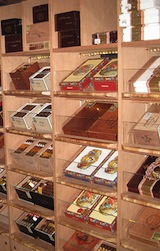 When I say OCD, I mean it in a good way. Lots of cigar smokers worry about summertime temperatures increasing the chances of a beetle attack. But you’re more likely to see your sticks ruined in the winter from extremely low humidity drying them out beyond repair. Even if you have mild winters, humidity levels will be low and the heat will drive them down even further. Check the hygrometer in your humidor frequently—every couple of days isn’t too often—and add distilled water when necessary.
When I say OCD, I mean it in a good way. Lots of cigar smokers worry about summertime temperatures increasing the chances of a beetle attack. But you’re more likely to see your sticks ruined in the winter from extremely low humidity drying them out beyond repair. Even if you have mild winters, humidity levels will be low and the heat will drive them down even further. Check the hygrometer in your humidor frequently—every couple of days isn’t too often—and add distilled water when necessary.
Brush, brush, brush. I’m no dentist, but I’ve been told by more than one that smoking can lead to an increase of tartar and its associated problems. So, it’s always a good idea to brush as soon as practical after smoking. I don’t know how much it will lessen the buildup, but, hey, it couldn’t hurt. Any dental professionals out there feel free to weigh in.
Cleanliness is at least next to freshness. Whether you smoke inside or out, get rid of the ashes and butts when you’re done. Huge ashtrays are great, but no excuse for collecting tobacco detritus. It creates that unpleasant barroom-at-4 a.m. odor far more than the smoke.
Just wondering. Why are there cigar ads these days in nearly every magazine that aims at an upscale audience except Wine Spectator, the larger sibling of Cigar Aficionado? Aren’t fine wine and premium cigars considered one of the ultimate pairings?
I’m not sure I see the point. I’m always intrigued by cigar reviewing that’s done blind. But does anyone ever smoke that way? Knowing at least a little about the cigar you’re smoking is part of the experience—whether picking up a stick you’ve never heard of or laying out big bucks for a highly regarded limited edition.
photo credit: Stogie Guys

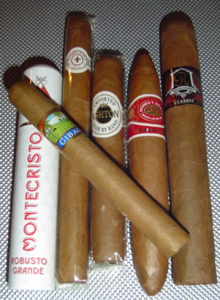 But not all the time. Occasionally, I look for a milder cigar and, when I have a good one, I’m always struck by how satisfying it can be. This came home to me again recently when I pulled an
But not all the time. Occasionally, I look for a milder cigar and, when I have a good one, I’m always struck by how satisfying it can be. This came home to me again recently when I pulled an 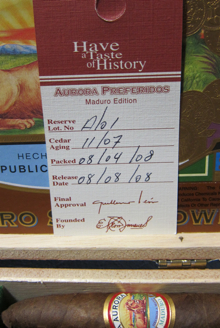 And when these terms appear on a box of a cigars or in a cigar catalog, it’s often hard to hard to separate the marketing hyperbole from the facts. Does the handmade cigar industry need better labeling? If so, who should decide what those standards are and how they might be enforced?
And when these terms appear on a box of a cigars or in a cigar catalog, it’s often hard to hard to separate the marketing hyperbole from the facts. Does the handmade cigar industry need better labeling? If so, who should decide what those standards are and how they might be enforced? Narrowing our list proved difficult, so we’ve focused on new lines (excellent extensions, like the
Narrowing our list proved difficult, so we’ve focused on new lines (excellent extensions, like the 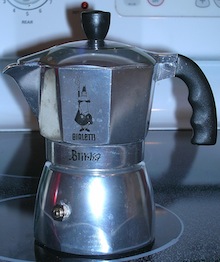 I’ve never been an alcohol drinker. Though I’ve tried almost everything, I’ve failed to develop a taste for it. My choice of a drink to pair with a cigar is almost always
I’ve never been an alcohol drinker. Though I’ve tried almost everything, I’ve failed to develop a taste for it. My choice of a drink to pair with a cigar is almost always 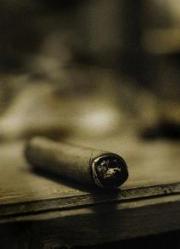 I had looked forward to trying this rare, fairly expensive smoke for the first time, especially given its plethora of accolades and impressive pedigree. I remember slowly selecting it from one of my humidors and taking great pleasure in the pre-smoke ritual. I took note of the aroma. I examined the exterior leaf with a careful eye. And I admired the cap before making a precise cut.
I had looked forward to trying this rare, fairly expensive smoke for the first time, especially given its plethora of accolades and impressive pedigree. I remember slowly selecting it from one of my humidors and taking great pleasure in the pre-smoke ritual. I took note of the aroma. I examined the exterior leaf with a careful eye. And I admired the cap before making a precise cut. Patrick Ashby
Co-Founder & Editor in Chief
Patrick Ashby
Co-Founder & Editor in Chief Patrick Semmens
Co-Founder & Publisher
Patrick Semmens
Co-Founder & Publisher George Edmonson
Tampa Bureau Chief
George Edmonson
Tampa Bureau Chief